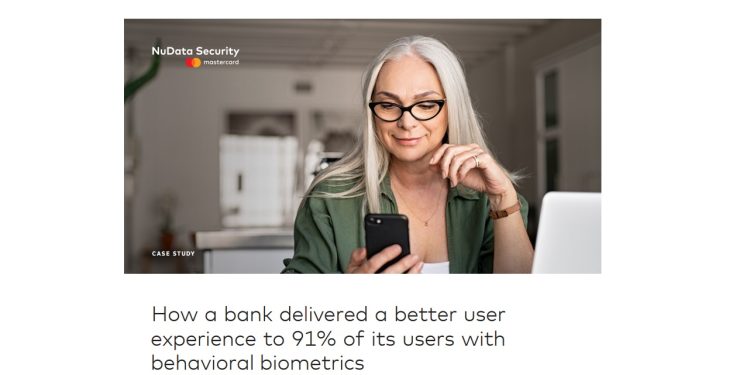Preventing fraud and friction seem to be diametrically opposed goals, since robust authentication has historically meant additional steps and security measures that add time to the customer online experience. Customer expectations for seamless login have only grown, but so has attempted fraud. How does one reconcile those two facts?
As we can see in NuData’s most recent case study about a large U.S. bank seeking a seamless customer authentication, the answer lies in behavioral biometrics capabilities.
Benefits of behavioral biometrics
Digitalization is permeating every aspect of modern life. As a result, user expectations for digital experiences are at a record high and strong security protections are critically important. However, frictional login processes such as multi-factor authentication (MFA), one-time password (OTP), security questions, and login confirmation via email may cause customers to move away to competitors who offer a better experience.
Behavioral biometrics helps organizations to not depend as much on those irritating authentication processes, and instead validate users by how they behave. By recognizing each individual user’s behavior without looking at their personal information, companies can automatically remove friction to create a more seamless process for the user. NuData’s behavioral biometrics technology builds user profiles based on hundreds of inherent behaviors, and as demonstrated in the NuData case study, it can do so with high accuracy to help companies improve their user experience.
Building a behavioral profile
Any behavioral biometrics model requires a training period to learn to recognize the behavior of each individual user. While physical biometrics such as thumbprints or facial recognition can be learned instantly, behavioral profiles can take up to three months to develop. The NuData algorithm, however, can build an online user profile in 30 days or less. In addition, these tools can provide value from day one leveraging models that recognize how good and bad users normally behave. This is important for companies as they need to protect their environments and offer a better experience from the get-go.
14% of attacks mimic human behavior that can bypass bot-detection tools. To combat the threat, some behavioral players look at passive biometrics parameters such as typing cadence or even how users hold their phone.
The good or risky user profiles are built based on the most significant patterns for each population, as we can see from the case study. Risky traffic, for example, often shows fast typing and location and IP mismatches; trusted traffic shows recognized typing patterns and input behavior, as well as familiar devices being used.
Offering exceptional UX
According to Statista, global online banking is forecast to reach 2.5 billion users by 2024. But every significant technological advancement has brought a commensurate increase in fraud activity.
Behavioral biometrics can help companies turn the fraud strategy on its head: instead of focusing on the risky traffic, companies can better recognize the trusted users and offer them a better and more customized experience. 76% of consumers are more likely to recommend a brand because of a positive experience. Moreover, the NuData model can eliminate risky traffic from the start, before it can do any harm to the company.
To learn more how behavioral biometrics actually works and recognizes users without additional friction, take a look at NuData’s case study.










